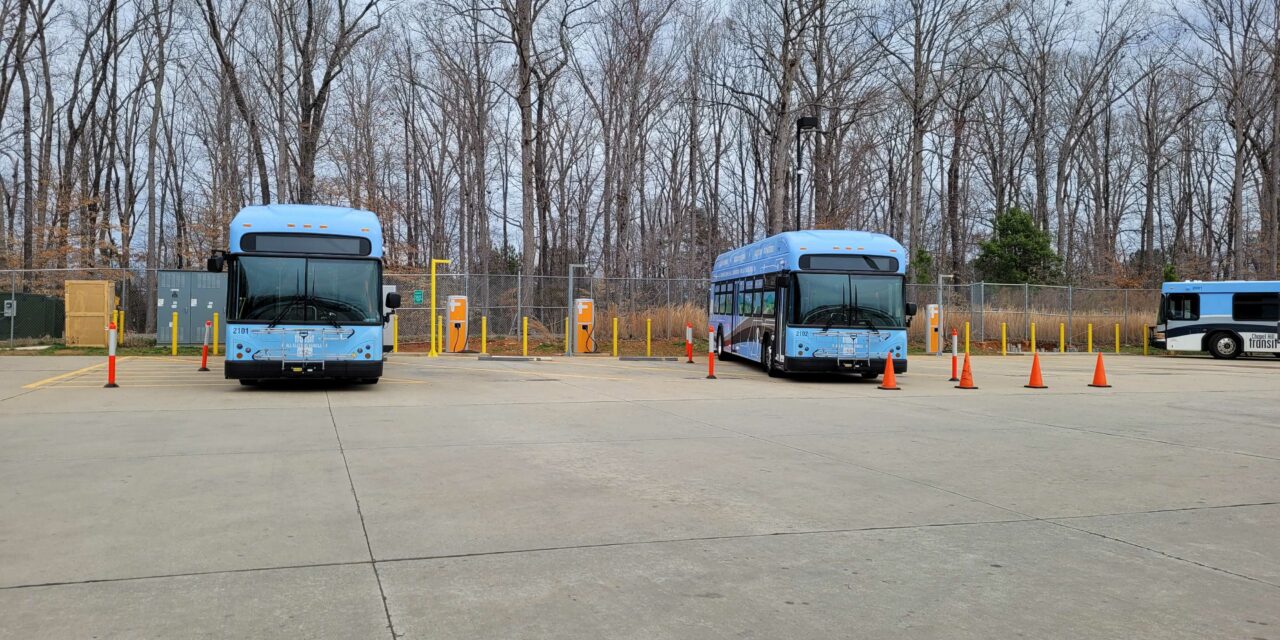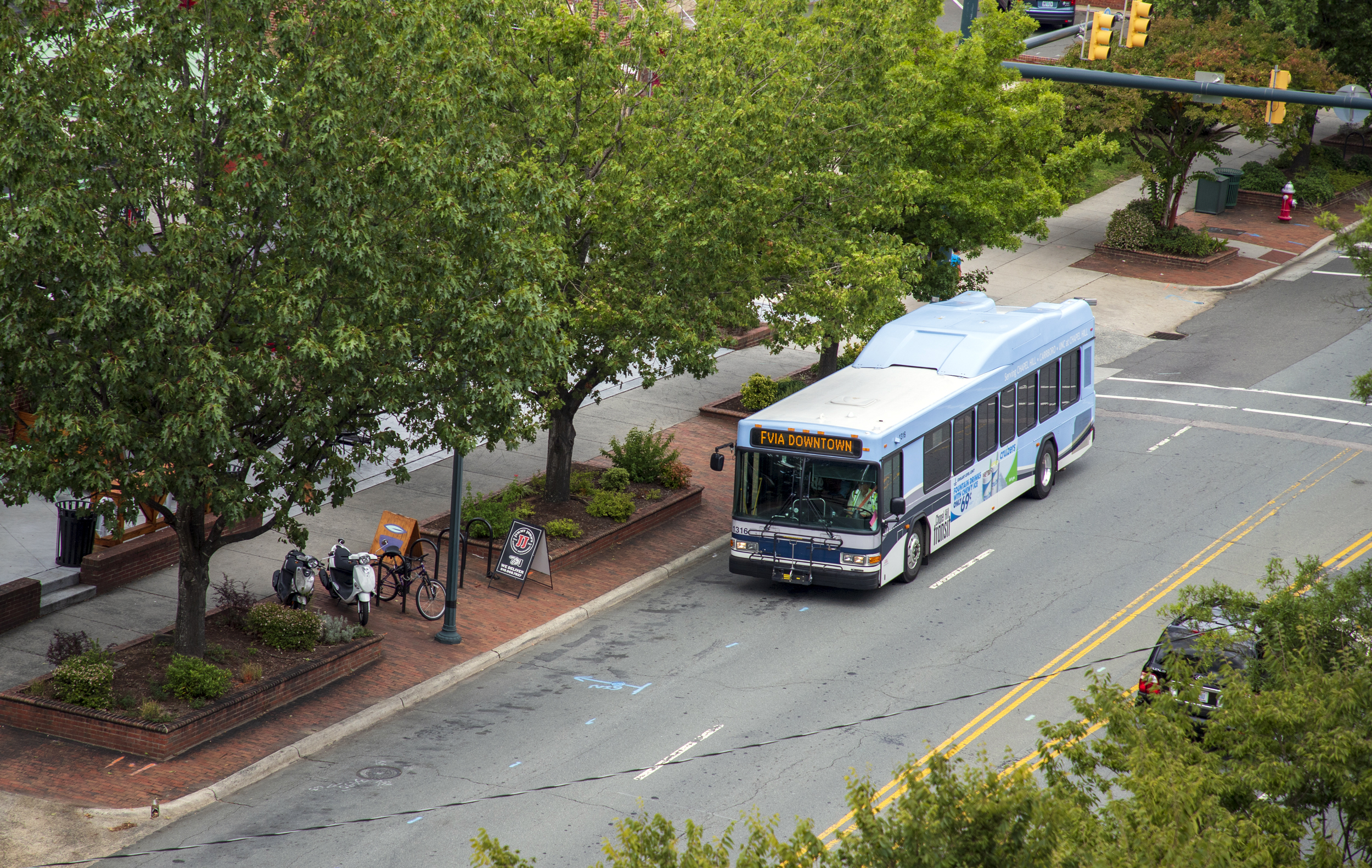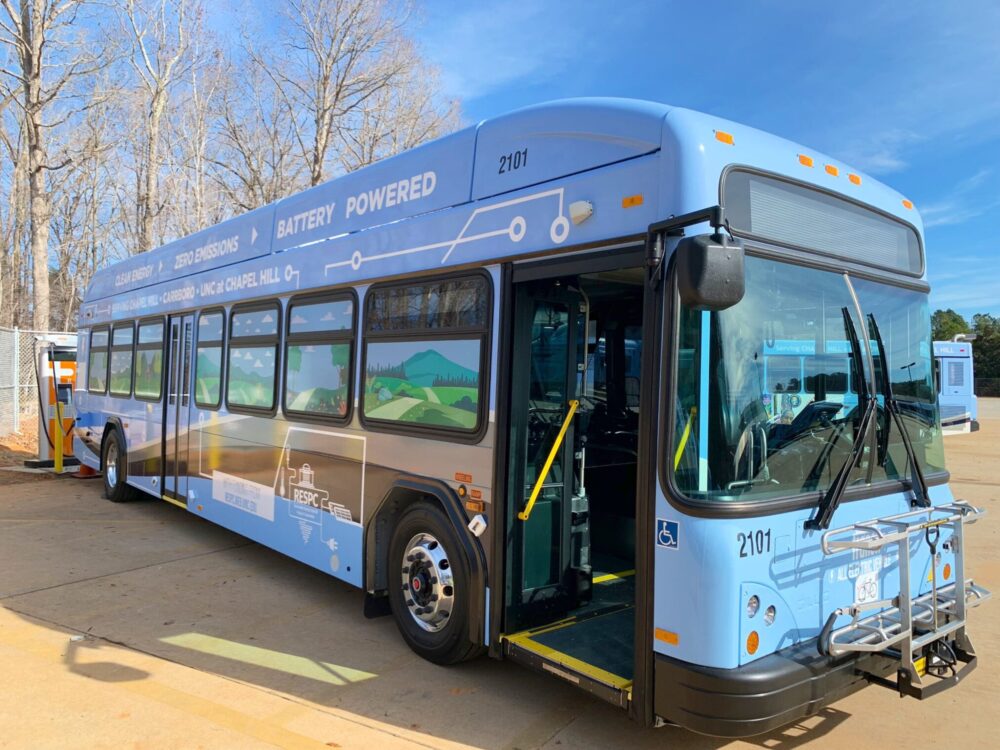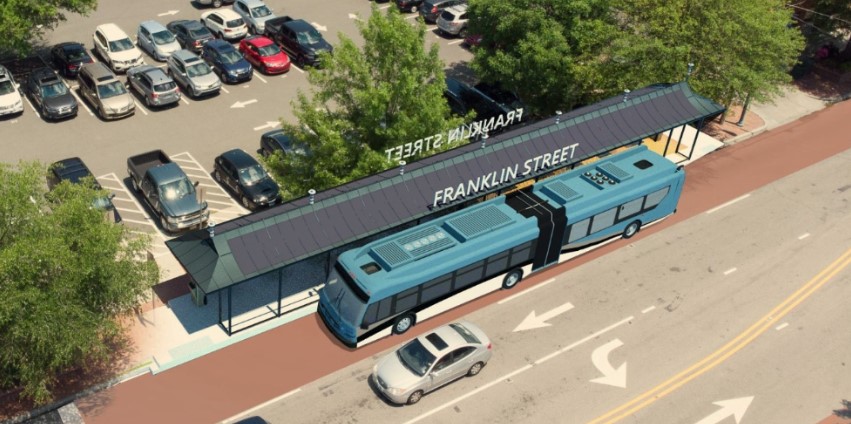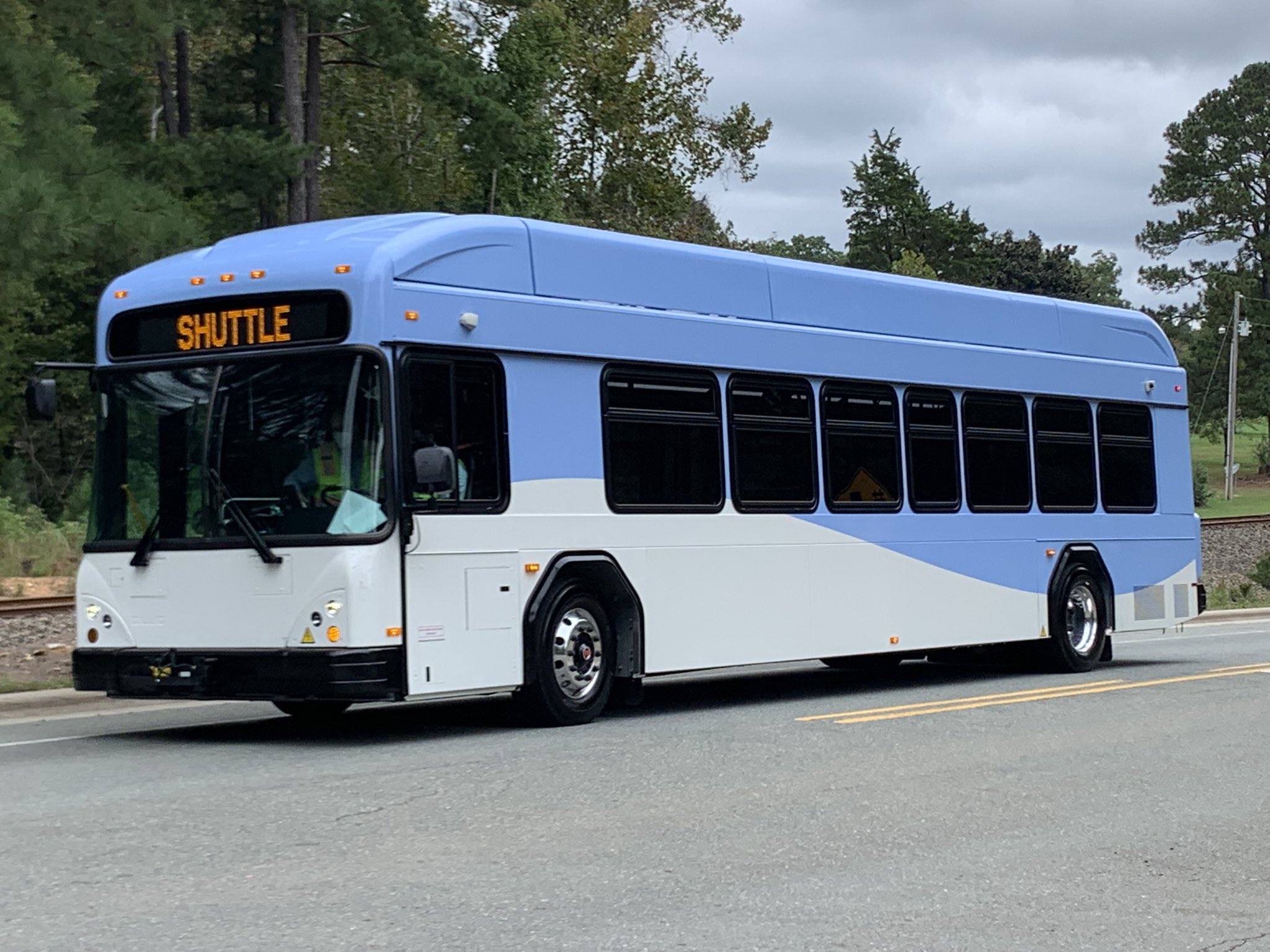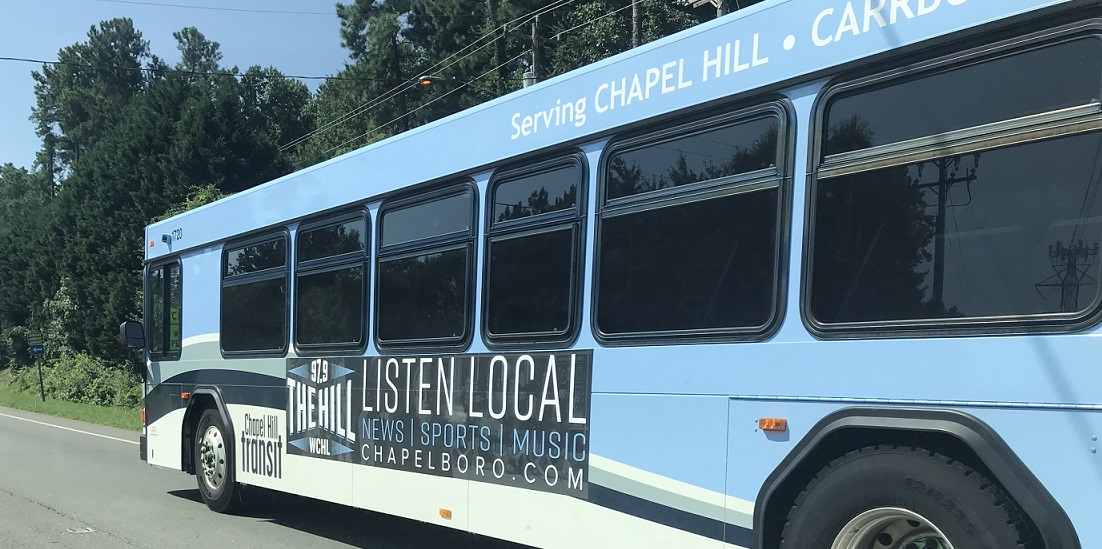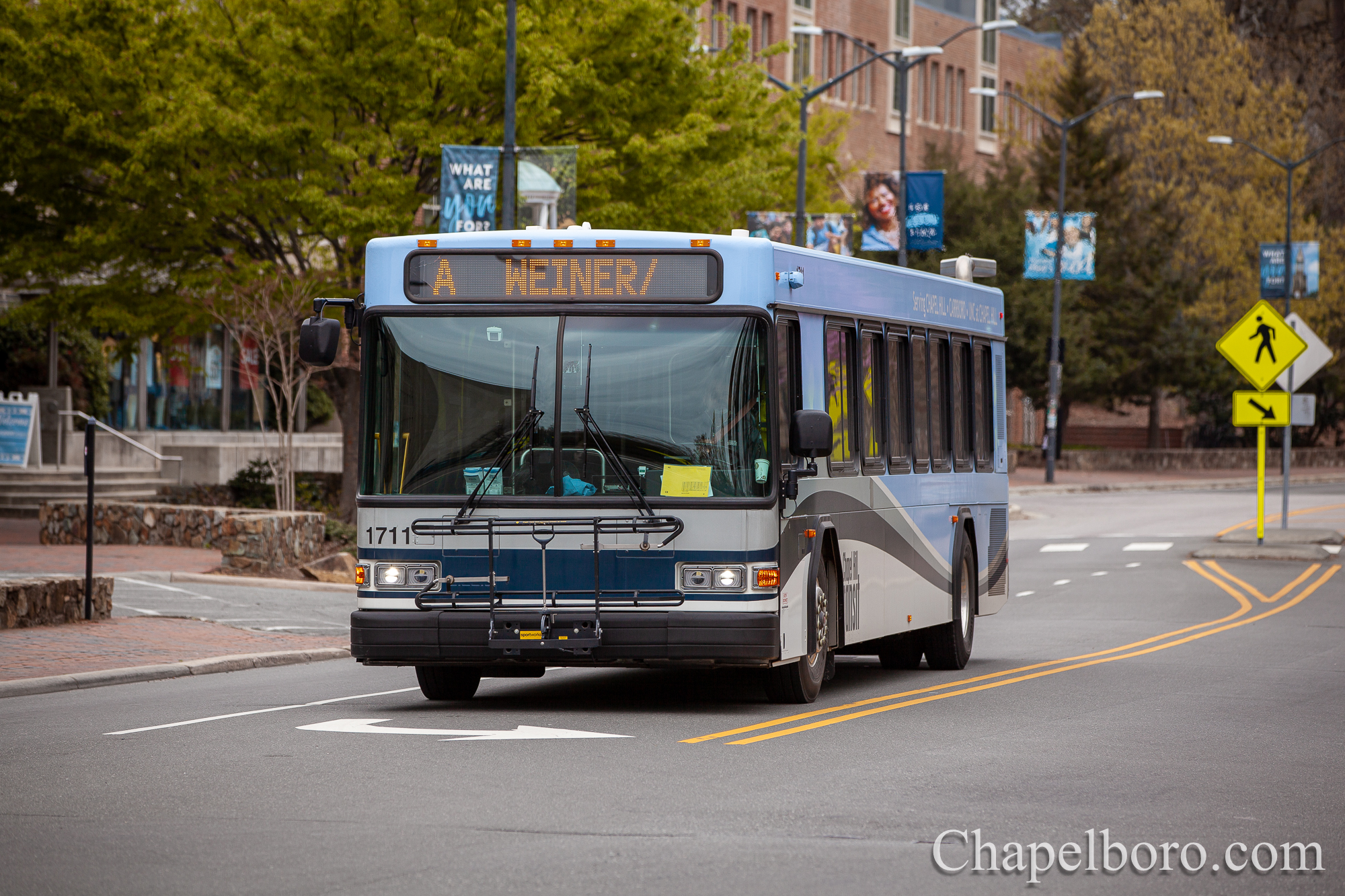Chapel Hill Transit proposed big plans to expand its facilities at a town council meeting last month. The four-phase proposal includes adding more zero emission buses, constructing a second roadway for buses to enter the facility and updating its maintenance facilities.
Transit’s highest priority is to expand the charging infrastructure for electric buses and the bus yard itself. Transit currently has four electric buses and seven more on order. But within the next year, they could have 20.
Chapel Hill Transit Director Brian Litchfield said the long-term goal is to eventually phase out all of the current vehicles for zero emission buses.
“As we go past 20, we start putting chargers out in the parking area we run out of space pretty quickly,” he said as walking around the bus yard.
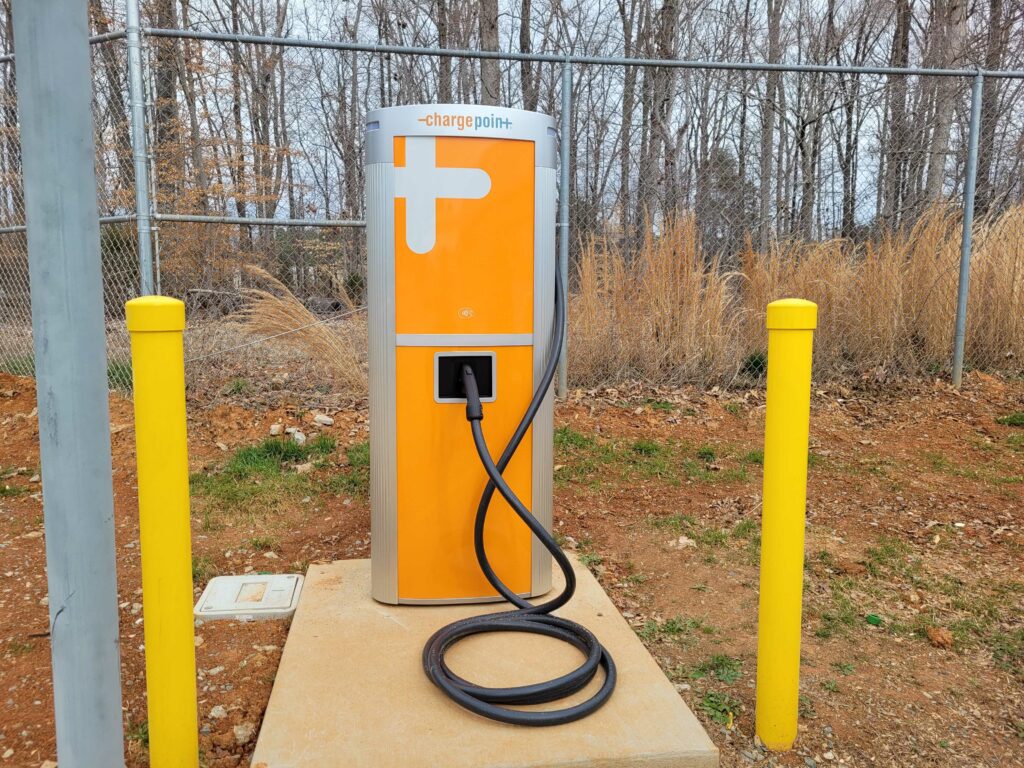
Chapel Hill Transit chargers for electric buses.
At the moment, nearly every spot in the yard is taken up by a bus. In addition to being a parking lot, the yard also serves as a docking station for electric bus chargers and even a training facility for new operators. Litchfield said this doesn’t leave any room for new improvements.
“Basically, we don’t have enough space out here to put all of the charging infrastructure we need,” he said. “We also don’t have the space to add additional parking for buses for North-South BRT (Bus Rapid Transit) or any other expansion projects we might have in the future.”
NS-BRT is a busing project Chapel Hill has been working on for the past 15 years. It includes creating bus-only lanes on the road and a multi-use path for pedestrians.
Litchfield said part of the project will require buying more buses.
“We need between 12 and 15 and maybe more of the 60-foot articulated buses,” he said. “So those are even bigger than the buses we see here. And this parking area was not built around that size vehicle.”
When Transit adds more buses, it will also have more bus operators to train. Litchfield said this is another reason why the expansion is necessary, because the training takes place in the same area as parked buses.
“When we train bus operators we have to move these buses into very different configurations and make space in order to do that,” he said. “So expanding into this area will also allow us to be able to do some of that as well too.”
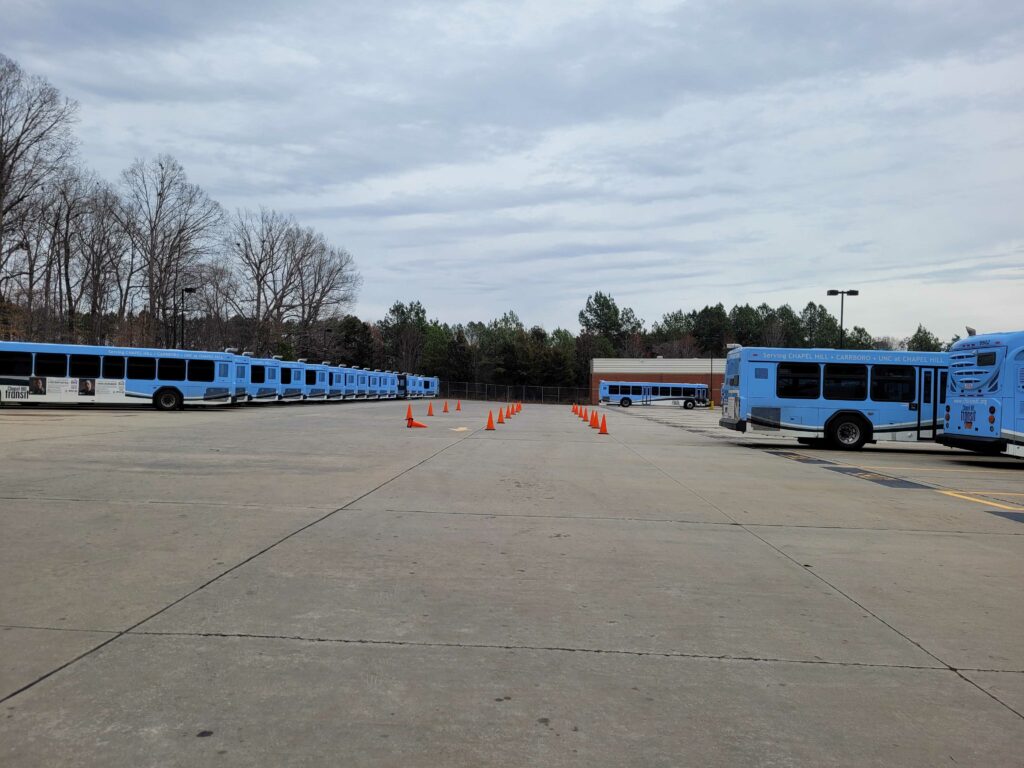
Chapel Hill Transit training area. New operators are trained in the same lot as parked buses.
Transit is proposing to use some of the town’s public service facilities as part of the expansion. The area is temporarily being used as a training ground for firefighters.
Litchfield said in the future, the location can be repurposed into more parking for buses and reserved for an additional facility. At the town council meeting, Project Manager Katy Fontaine said this facility would ideally be two stories and provide more room for a growing staff.
“The minute we moved into that space there, we immediately outgrew it,” Fontaine said during the meeting. “So we kind of need a larger operations and maintenance center there to help with the training of our staff as well as the future day to day operations.”
Another part of the concept plan is to build a second roadway for buses and transit personnel. The facility’s current setup only allows for buses to enter and exit the facility using one access point: Millhouse Road. Near this area is railroad tracks, Interstate 40, and Old Field Creek, which can pose hazards for entering the facility if there’s an emergency.
“We’re right next to the railroad tracks, there are other things that could potentially happen that could inhibit our ability to go in and out of our facility,” Litchfield said. “So having one ingress and egress point doesn’t make a lot of sense for a public facility such as ours.”
Litchfield said a possibility for this access point could be connecting the facility to the back side of Eubanks road.
“If we didn’t have to build a road, we’d prefer not to do that,” he said. “One option that we’re looking at is could it be a bus-only or service vehicle-only access.”
In the town council meeting, some members shared concerns with how the access point will be developed. Mayor Pam Hemminger brought up how the construction includes building over waterways behind the Transit property.
“I like the plans,” Hemminger said. “I’m concerned about the road plans, would like to know more. I mean building a bridge across streams and creeks is very expensive, especially if you are trying to cross big large buses over it. I just, please take another look and just see because I think building a road over all that wetland and the streams might be expensive and maybe not necessary for the use there.”
Abel Hastings, a member of the public, brought up a concern about how the overall expansions could build over community trails.
“I raise this issue not because I’m opposed to this project, in fact I’m in favor of it,” Hastings said. “…but I’d also want to make sure you’re aware of all of the other green space that might not appear on the Chapel Hill website. There’s plenty of other greenspace that’s vital to our community nonetheless.”
Litchfield said Chapel Hill Transit is open to looking for other access point options if it is too much to take on environmentally or financially.
“There is a stream and some wetlands and other things back behind our facility that we need to be thoughtful about and need to be sensitive to. We’ve not decided what that looks like, we just wanted to make sure that as we were discussing the concept plan that all of the things we were thinking about for the future were included in that.”
The first priority of the concept plan is to expand the bus yard and implement the new electric charging stations. This project will cost about $5 million and Litchfield said the hope is to start working on it within the next year or two.
Chapelboro.com does not charge subscription fees, and you can directly support our efforts in local journalism here. Want more of what you see on Chapelboro? Let us bring free local news and community information to you by signing up for our biweekly newsletter.

